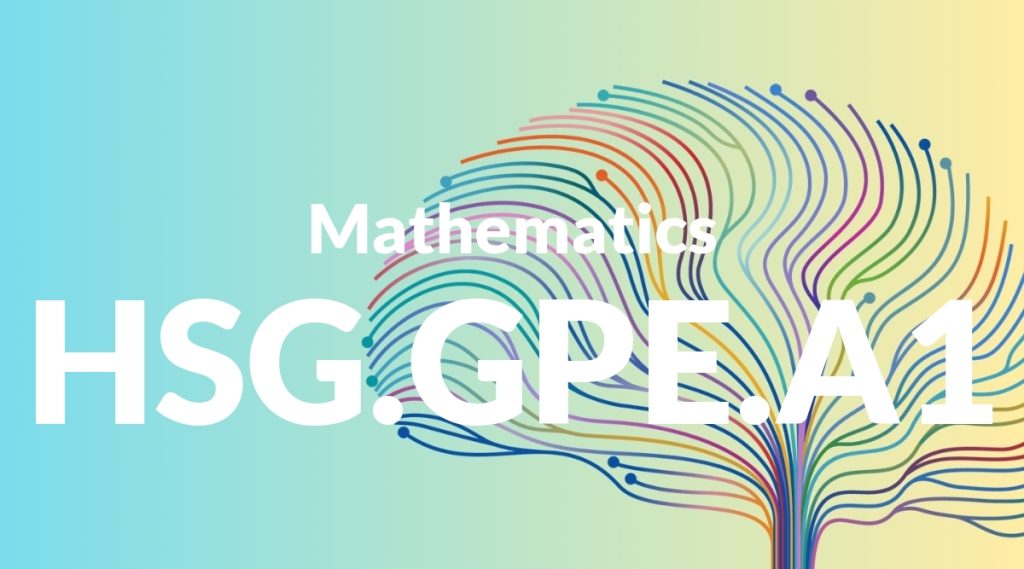Standard: HSG.GPE.A1 – Derive the equation of a circle of given center and radius using the Pythagorean Theorem; complete the square to find the center and radius of a circle given by an equation.
Grade level: High School: Geometry
Subject: Mathematics
Domain: Expressing Geometric Properties with Equations
Teacher Overview
This standard focuses on deriving and manipulating the equation of a circle, a fundamental concept in geometry that connects algebraic and geometric thinking. Mastery of this standard helps students understand the properties of circles and prepares them for more advanced topics in mathematics. Students should be comfortable with the Pythagorean Theorem, basic algebraic operations, and plotting points on a coordinate plane.
Mastery of this standard will enable students to tackle more complex geometric problems involving conic sections, such as ellipses and parabolas.
Common Misconception 1
A common misconception is that the equation of a circle is linear, like the equation of a line. This is incorrect because the equation of a circle includes squared terms, which result in a curved shape.
Intervention 1
To address this, use graphing software or graph paper to visually demonstrate the difference between the linear graph of a line and the curved graph of a circle.
Common Misconception 2
Another misconception is that completing the square in the context of circles is the same as solving quadratic equations. This is not accurate because the goal in completing the square for circles is to rewrite the equation in a specific form, not to find the roots.
Intervention 2
Provide targeted practice that focuses on the steps of completing the square specifically for circle equations, and contrast this with solving quadratic equations.
Prerequisite Knowledge
Students should understand the Pythagorean Theorem, basic algebraic manipulation, and the concept of a coordinate plane.
Subsequent Knowledge
After mastering this standard, students will be able to apply their understanding of circle equations to more complex geometric problems, including those involving ellipses and parabolas.
Instructional Activities
- Graph different circles given their equations and identify their centers and radii.
- Use the Pythagorean Theorem to derive the equation of a circle from a given center and radius.
- Complete the square for various circle equations to find their centers and radii.
- Apply circle equations to real-world problems, such as designing a circular garden or plotting a circular track.




